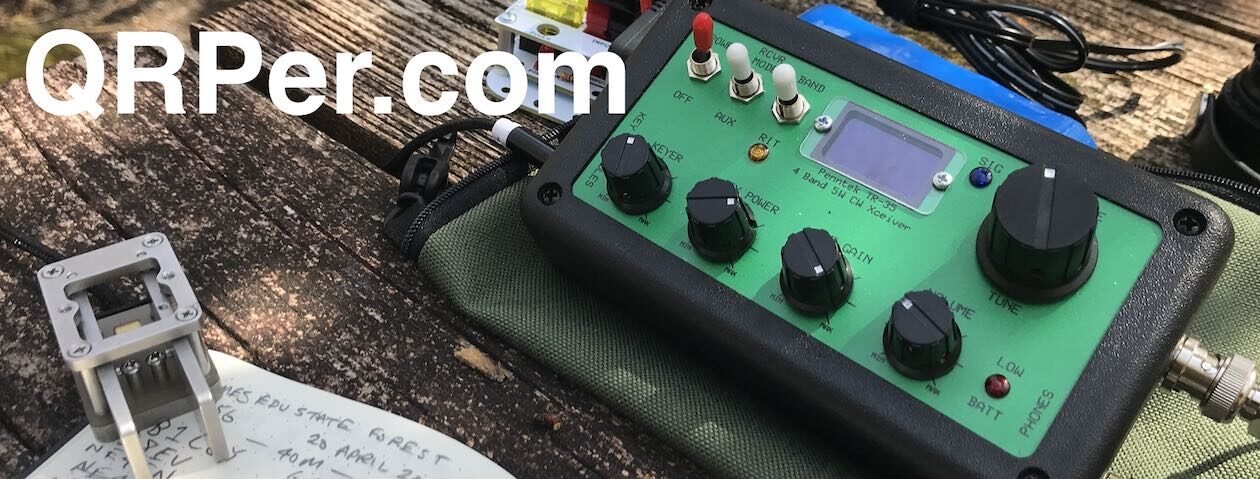Many thanks to Damian (SP9LEE) who shares the following field report:

Field Report: 5 Parks in 5 Hours
by Damian (SP9LEE)
Okay, to be totally frank with you and as not to lose your trust, I have to admit that the title, however technically 100% true, may be slightly misleading. If you’re wondering to what extent, I suggest you keep reading 😉
I live in Krakow, the second-biggest city in Poland, and I’ve always complained about not having enough green areas there. But starting my QRP outdoor adventure and joining the POTA program helped me realize that I couldn’t be more wrong. I live in the city center (20 minutes walking distance from the Main Square) and as it turns out, there are 11 POTA parks within a 20-minute drive (outside rush hours, of course), and around 30 if you decide to drive 40 minutes.
That’s just crazy, especially compared to the places where some POTA Brave Souls live, giving Thomas (K4SWL) as an example – a few dozen activated parks, but only a couple of them in close range. Mine I could reach by foot or bike! I don’t like to waste anything (not only tangible goods, but also opportunities or this great potential that a lot of nearby POTA parks give), so I rolled up my sleeves and started activating one by one in May 2022.
But when December 31 comes, it tends to provoke reflections of the happenings in the last year. This happened to me as well. I asked myself: “Hey, isn’t it also a waste if you have a few parks clustered and never try to do them all in one day?” As you read this, you already know what the answer was. I decided not to hesitate and do it as soon as possible, on January 2nd, 2023.
Since I’ve never tried to do more than one activation per day, I felt quite insecure. What I do like during an activation is to practice quick antenna deployments (this may be useful one day), then experiment with different antenna configurations (such as sloper angles, heights, azimuths, counterpoise placement), and finally make as many contacts as possible during a given time limit. This time limit is usually set by my family schedule or other errands I need to run.
As you can see, that’s the complete opposite to the requirements that RaDAR or POTA Rover awards make: proficient antenna deployment, gathering 10+ QSOs for a valid activation, collecting the equipment, and speedy drive to a next spot. Sounds challenging? But isn’t it what the New Year usually brings? It’s just a matter of making proper adjustments in one’s procedures and attitude. At least, that’s what I thought.
I picked three park entities 20-25 minute car drive from my home, which in total would give me 5 POTA references:
- SP-0997 Kowadza Protected Area (3-fer)
- SP-0994 Skołczanka Nature Reserve (3-fer)
- SP-2274 Skawiński Obszar Łąkowy Natura 2000 (2-fer)
They are all located on the territory of Bielańsko-Tyniecki Lanscape Park (SP-0993) and/or Dębnicko-Tyniecki Obszar Łąkowy Natura 2000 (SP-2122). So now you know why the title might be a bit misleading – I actually planned to take advantage of having 2- and 3-fers around and work 5 entities in total from only 3 different spots.

Kowadza Protected Area (SP-0997)
 I hopped into the car just after I left home (yes, some of us have work or school duties… and some of us have a day-off to play radio!). I’ve never been to the Kowadza Protected Area, so even after researching it on Google Maps, I wasn’t sure what to expect. Besides my standard set, I also packed my fiberglass 6m fishing rod in case there was no convenient place to mount the antenna, and my portable PV panels in case the LiPo 5Ah battery died. Continue reading POTA in Poland: Damian activates five parks in five hours →
I hopped into the car just after I left home (yes, some of us have work or school duties… and some of us have a day-off to play radio!). I’ve never been to the Kowadza Protected Area, so even after researching it on Google Maps, I wasn’t sure what to expect. Besides my standard set, I also packed my fiberglass 6m fishing rod in case there was no convenient place to mount the antenna, and my portable PV panels in case the LiPo 5Ah battery died. Continue reading POTA in Poland: Damian activates five parks in five hours →
 We need to do a little time-travel in this short field report…
We need to do a little time-travel in this short field report…













































